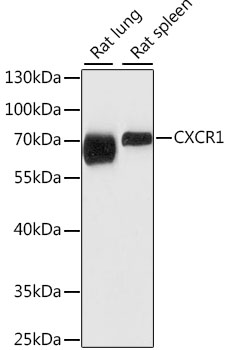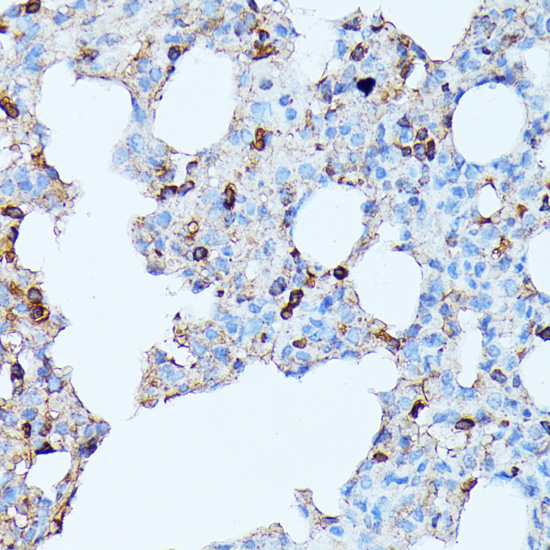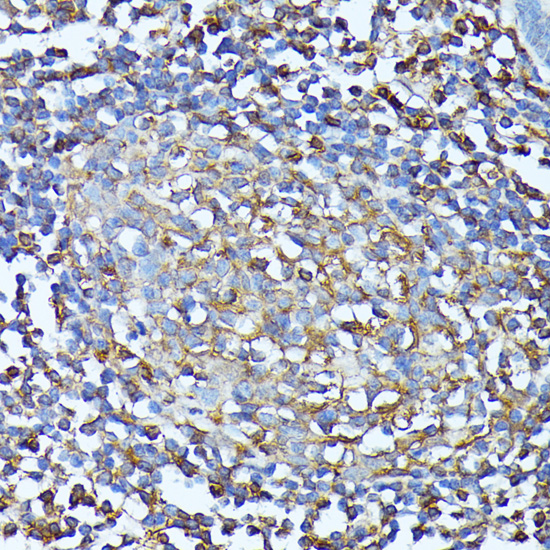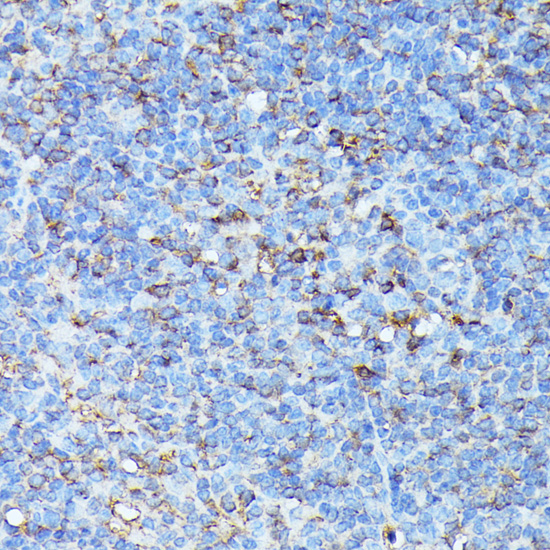-
Product Name
CXCR1 Polyclonal Antibody
- Documents
-
Description
Polyclonal antibody to CXCR1
-
Tested applications
WB, IHC
-
Species reactivity
Human, Mouse, Rat
-
Alternative names
CXCR1 antibody; C-C antibody; C-C-CKR-1 antibody; CD128 antibody; CD181 antibody; CDw128a antibody; CKR-1 antibody; CMKAR1 antibody; IL8R1 antibody; IL8RA antibody; IL8RBA antibody; C-X-C chemokine receptor type 1 antibody
-
Isotype
Rabbit IgG
-
Preparation
Antigen: A synthetic peptide corresponding to a sequence within amino acids 250-350 of human CXCR1 (NP_000625.1).
-
Clonality
Polyclonal
-
Formulation
PBS with 0.02% sodium azide, 50% glycerol, pH7.3.
-
Storage instructions
Store at -20℃. Avoid freeze / thaw cycles.
-
Applications
WB 1:500 - 1:2000
IHC 1:50 - 1:200 -
Validations

Western blot - CXCR1 Polyclonal Antibody
Western blot analysis of extracts of various cell lines, using CXCR1 antibody at 1:1000 dilution.Secondary antibody: HRP Goat Anti-Rabbit IgG (H+L) at 1:10000 dilution.Lysates/proteins: 25ug per lane.Blocking buffer: 3% nonfat dry milk in TBST.Detection: ECL Basic Kit .Exposure time: 15s.

Immunohistochemistry - CXCR1 Polyclonal Antibody
Immunohistochemistry of paraffin-embedded rat lung using CXCR1 antibody at dilution of 1:100 (40x lens).

Immunohistochemistry - CXCR1 Polyclonal Antibody
Immunohistochemistry of paraffin-embedded human colon using CXCR1 antibody at dilution of 1:100 (40x lens).

Immunohistochemistry - CXCR1 Polyclonal Antibody
Immunohistochemistry of paraffin-embedded mouse spleen using CXCR1 antibody at dilution of 1:100 (40x lens).
-
Background
Receptor to interleukin-8, which is a powerful neutrophils chemotactic factor. Binding of IL-8 to the receptor causes activation of neutrophils. This response is mediated via a G-protein that activate a phosphatidylinositol-calcium second messenger system. This receptor binds to IL-8 with a high affinity and to MGSA (GRO) with a low affinity.
Related Products / Services
Please note: All products are "FOR RESEARCH USE ONLY AND ARE NOT INTENDED FOR DIAGNOSTIC OR THERAPEUTIC USE"
